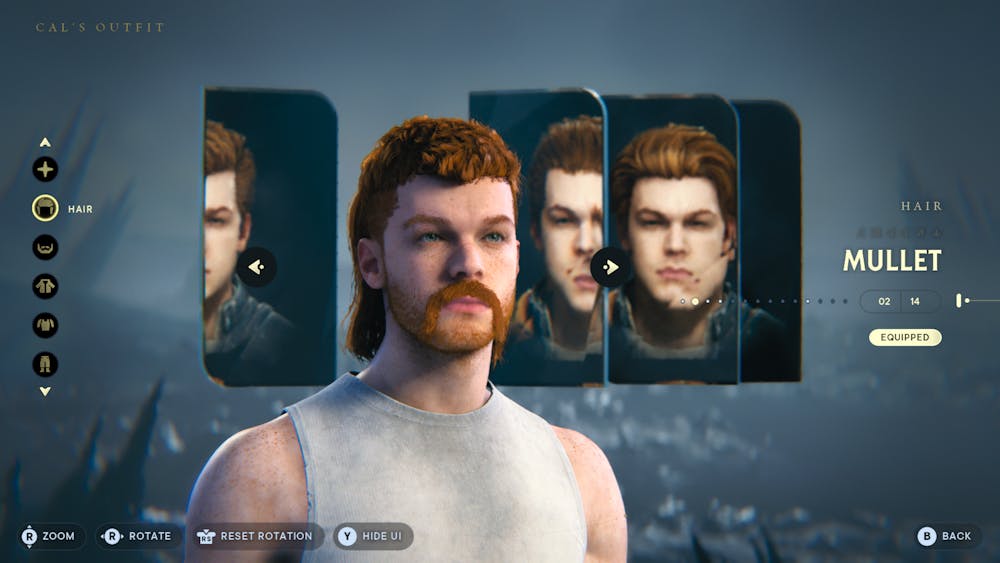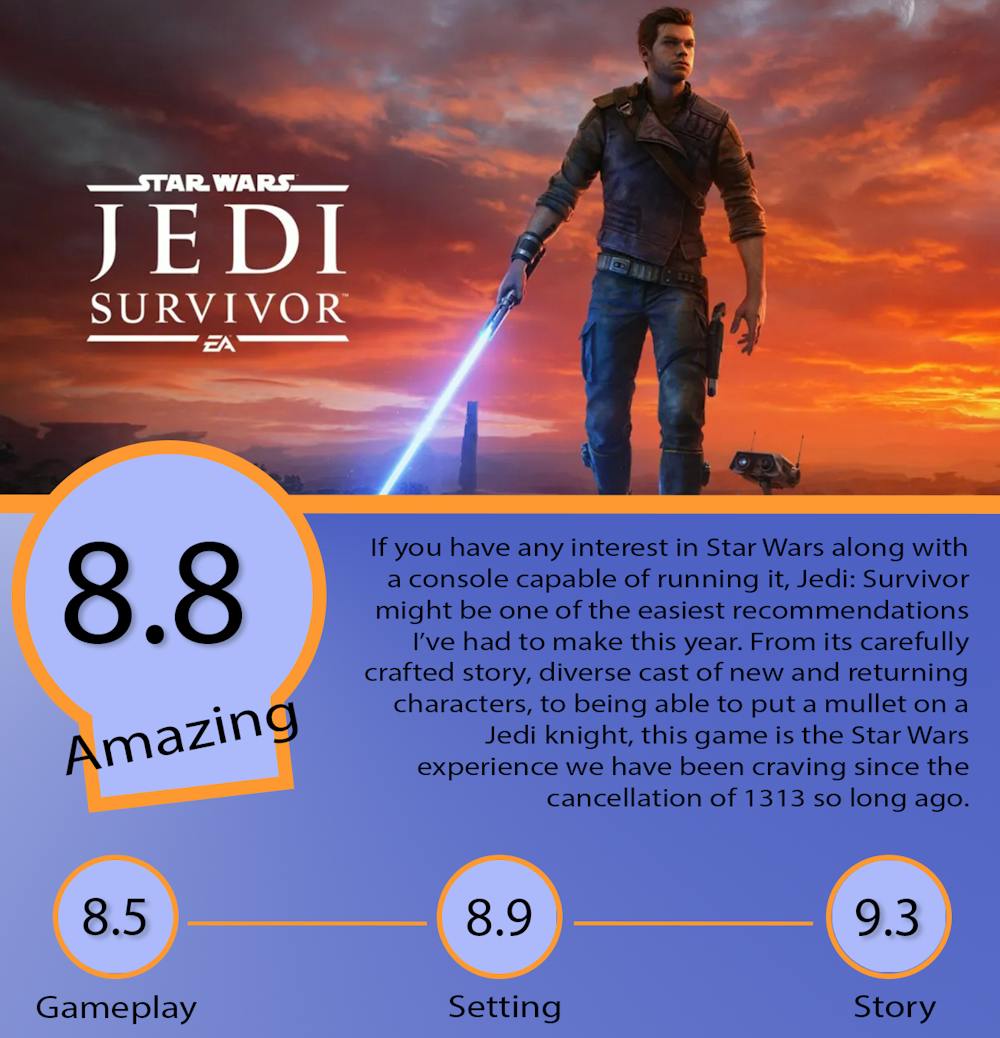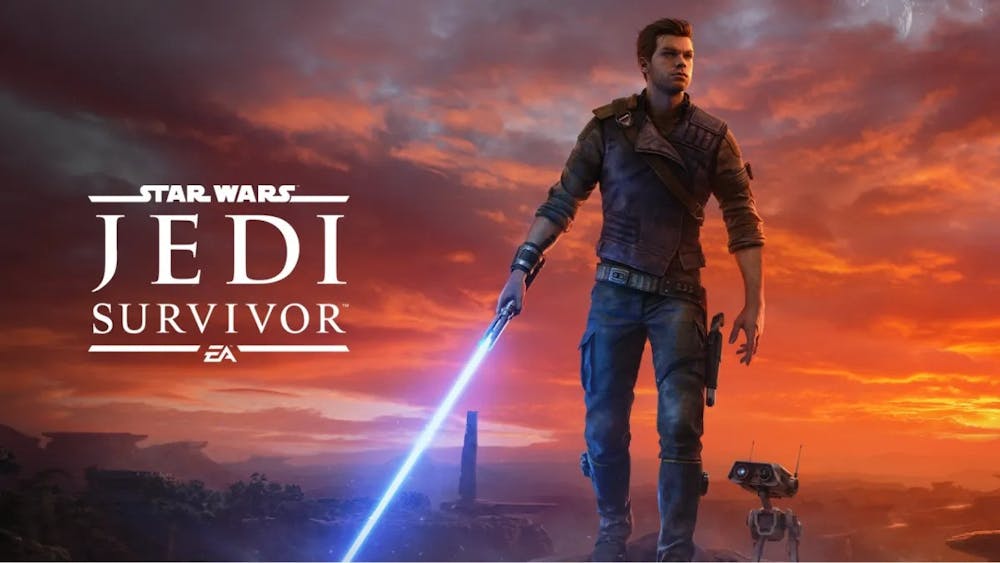The opinions and views expressed in this article are those of the author and do not reflect the opinion of Byte or Byte’s editorial board.
Reviewed on: Xbox Series S
Over the first two days of this game’s release, I’ve spent 26 hours and 32 minutes playing through its entire story. In short, it just might be one of the best things to come out of Star Wars in the 21st century. Yes, even after the recent finale of The Mandalorian or the critical successes of Andor and LEGO Star Wars: The Skywalker Saga. Recently, Star Wars has had a bit of a renaissance in terms of dishing out quality project after quality project, and the Cameron Monaghan-led Jedi games developed by Respawn Entertainment have been no exception. After the release of Star Wars Jedi: Fallen Order, many people, including myself, were wondering whether or not Respawn would be able to give us the follow-up that we deserve. Our concerns were unfounded, because boy did they deliver.
Just about everything here—from the story, to the characters, to the combat, to the sheer exploration—is perfectly crafted for something created during a worldwide pandemic. It’s like the developers looked at Fallen Order and said to themselves, “Okay. People like this. How can we just…make it better?” which is, funnily enough, exactly what they did with Titanfall 2. It seems like Respawn has found a specialty in making sequels.
“This is where the fun begins”
I just want to get out of the way that I played this game on my XBOX Series S, so despite my performance not being the best (hovering around 30 fps the whole time) it certainly wasn’t as bad as what I’ve heard about the PC port, which hardly seems to even run. For this review, however, I will purely go over my own experience of the game, which was smooth sailing for the most part.
Even though the story of Cal Kestis (Cameron Monaghan) seemed to come to a perfectly fine conclusion after the end of the first game, this game’s story picks up five years after the events of the original game. Even though many of the characters look at Cal as a young Jedi, he has grown up to be much tougher and more capable than he was in the original game. The cast of returning characters that surround Cal such as Jedi Master Cere Junda (Debra Wilson), Greez Dritus (Daniel Roebuck) and Merrin (Tina Ivlev) have also grown a lot both visually and in the way they operate. Merrin has been scouring the galaxy in search of herself, Cere has been hiding out in the desert with a group of Force-sensitives known as the Hidden Path, and Greez owns a tavern that you are able to send people to through side missions found all over the game’s playable planets.
The villain of this game is Dagan Gera (Cody Fern), an ex-Jedi from the High Republic era, which is around 200 years before the events of the Skywalker Saga. He has been stuck in a bacta tank all this time, and he wants revenge against the Order that wronged him. As this game is set between episodes three and four, the Order is no more, so Dagan comes up with another idea: to find the planet known as Tanalorr. Tanalorr is a planet that is essentially impossible to get to without certain keys that were crafted in the High Republic. Since Tanalorr can serve as a place to keep refugees away from the Empire’s wrath, Cal and friends decide that they are better off getting to Tanalorr before Dagan does. So the race is on, and in that race many friends are gained such as my favorite, Bode Akuna (Noshir Dalal), who later in the story pulls off one of the greatest stunts in the history of the franchise. It would be a disservice if I discussed it any further, so I implore you to find out for yourself.
“I am one with the Force”
On the gameplay side, the combat is nothing short of amazing. Right out the gate, you are able to choose from a regular single bladed lightsaber, a double-bladed lightsaber, and a new dual wield stance that allows Cal to send a volley of attacks toward his opponent, but opens himself up for counter-attacks. Throughout the story you unlock two more stances to choose from, one being my personal favorite: the blaster stance which blends fencing style sword combat with gun-fu elements to bring something unique to the table that we are not used to seeing in the Star Wars universe. The last unlockable stance in the game equips Cal with a crossguard saber which is super slow but very powerful, reminiscent of a knight using a greatsword.
When talking about the combat of this game, it is hard to not mention how close it is to Elden Ring and other “Soulsborne” games as the kids call them. Although this game is certainly not as difficult as your average FromSoftware game, the difficulty settings available will make sure you get your fix if you’re looking for something with a little more challenge than normal. If you’re wondering if this one is any more difficult than the last one, however, I would say that it is about the same. With the notable exception of the final boss fight, which took me about an hour to finally beat.
In-game screenshot taken on Xbox Series S
Something else that has been expanded upon from the first game is the customization options that are available to the player. Just like the last game, you start the game with very little customization, but instead of just having different colored vests and ponchos like Fallen Order, this game turns it up to 11 and lets us make our Cal look just about however we like. During my playthrough, I opted to fit Cal with a tank-top, a tasteful handlebar mustache and a mullet that flows in the wind with every swing of his saber. If you’re not feeling as silly as I was, you can always give him a nice leather jacket, a shaved face and a crew cut and attack the empire in a more professional manner. Of course, we have more lightsaber customization, BD-1 customization, and once you unlock it, blaster customization. Every part of your kit can be perfectly customized to fit your play style.
Although my playthrough took 26 hours, you can easily stretch that number to double if you wish to explore every crevice and side mission that the game has to offer. Just like the last game, there’s bounty hunters and optional bosses to kill, but there’s also music to collect, perks to unlock, and tons of other details that I’m sure were hidden out of my sight. Something that wasn’t out of my sight, however, was the near-constant texture glitches that I encountered during my run. Thankfully, I only had the game crash one me one time, which was a lot less than I expected considering that just about every smooth surface I saw in the game looked like a wonky mess until I held the camera still. Even though I saw a lot of strange textures, I would be lying if I said that they took away from my gameplay experience in even the slightest bit. Even with its few visual flaws, it blew me away with just how much detail was crafted within a souls-esque Star Wars game. Now to just wait for the third game to finish this trilogy and cement itself as a defining Star Wars storyline.

Sources:
IMDb, IMDb, Starwars, IMDb, Respawn, Starwars, EA, IMDb, IMDb, IMDb, IMDb, IMDb, Eldenring, FromSoftware
Photos:
Contact Conor Butler with comments at cmbutler@bsu.edu



















